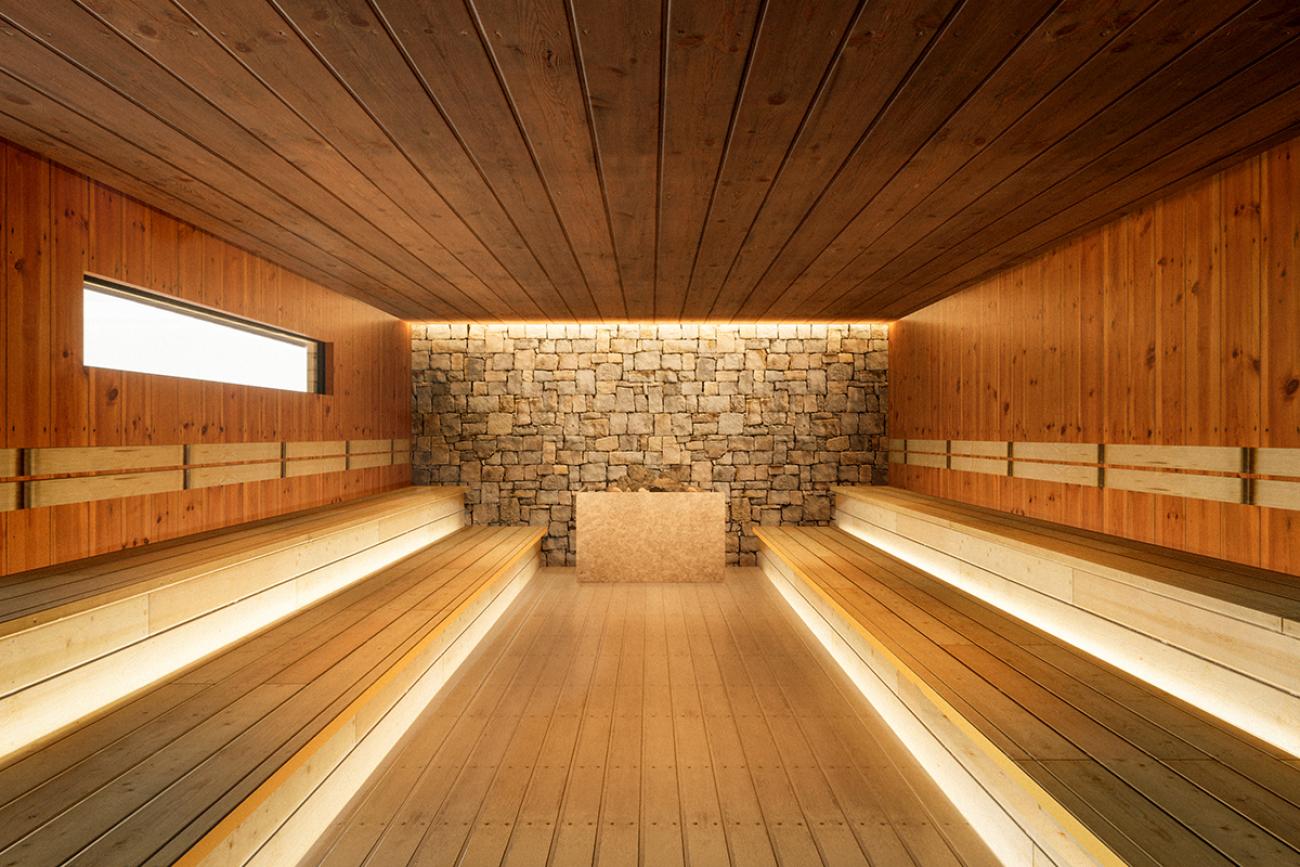

Hinoki wood, also known as Japanese Cypress, is one of the most valued and revered types of wood in Japan. Its scientific name is Chamaecyparis obtusa, and it belongs to the cypress family (Cupressaceae). In Japanese, Hinoki is written as 檜 or 桧, symbolizing its deep connection to Japan’s spiritual and architectural heritage. Hinoki is not merely a construction material; it is a symbol of purity, reverence, and the enduring essence of nature in Japanese spiritual life [1].
Hinoki possesses outstanding biological and physical characteristics, making it a top choice for warm and humid environments like bathrooms, saunas, or traditional Japanese wooden bathtubs (ofuro).
Naturally Antibacterial & Mold-Resistant
Hinoki contains hinokitiol and phytoncide – compounds with antibacterial, antifungal, and insect-repellent properties, requiring no chemical treatment. This ensures optimal hygiene in humid, high-temperature environments like saunas, where other types of wood might deteriorate [2], [3].

Heat-Resistant & Thermally Insulating
Hinoki retains its shape and structure under high heat without warping or cracking. Additionally, it absorbs and releases heat slowly, so the surface remains safe to touch – a critical safety feature in sauna design [1].

Natural Aroma with Health Benefits
Hinoki’s light, citrus-like aroma helps calm the nervous system, reduce heart rate and blood pressure, and elevate mood. Studies show that essential oils from Hinoki enhance parasympathetic nervous system activity – providing deep relaxation within minutes of exposure [3].

Elegant and Meditative Aesthetics
With its creamy yellow to ivory white hue, fine grain, and straight fibers, Hinoki lends a refined, bright, and clean feel to any space. In sauna settings, it creates a luxurious, meditative atmosphere closely connected to nature [2].


Hinoki’s history is closely tied to Japan’s most iconic structures. The Hōryū-ji temple – one of the oldest wooden buildings in the world – and the Ise Grand Shrine – a sacred site in Shintoism – were both built primarily using Hinoki. Historically, Hinoki has been considered a “sacred wood,” used in religious structures, palaces, public baths (onsen), and traditional bathtubs (ofuro).
Today, many modern Japanese architects continue to incorporate Hinoki into sauna and spa designs. For example, the handcrafted sauna project in Keihoku (Kyoto) by Studio 2M26 uses Hinoki alongside traditional carpentry techniques to create a natural and minimalist sauna experience [1].
Due to its rarity and the strict harvesting controls, companies like Hinoki Soken in Gifu Prefecture now supply products made from Kiso-Hinoki – a premium grade of Hinoki that is carefully selected by hand to preserve traditional Japanese woodworking quality and culture [3].
Benefits

Antibacterial and Moisture-Resistant → Ensures a hygienic sauna environment, prevents odors and mold.
Safe for Skin Contact → Does not overheat, non-allergenic, ideal for direct contact.
Natural Fragrance → Promotes deep relaxation, improves breathing, and reduces anxiety.
High Aesthetic Value → Bright color, beautiful grain, perfect for spas and meditative spaces.
Durable When Properly Maintained → Long lifespan; retains scent and structure for decades.
Drawbacks
High Cost: As a premium imported wood from Japan, Hinoki is significantly more expensive than common types of wood.
Limited Supply: Mostly sourced from strictly managed plantations in Japan, and often subject to counterfeiting.
Requires Careful Maintenance: Needs regular cleaning and protection from standing moisture or prolonged sun exposure.
Not Suitable for Outdoor Use Without UV Treatment: Prolonged exposure to sunlight and harsh weather may cause fading and scent loss.
Sources:
[1] R. Rowell, Wood and Cellulosic Chemistry, 2nd ed. Boca Raton, FL: CRC Press, 2005. [Online]. Available:
https://books.google.com.vn/books?hl=vi&lr=&id=KRHGj8fm9psC&oi=fnd&pg=PA6&dq=hinoki+for+sauna+room&ots=VbU1mOLuMa&sig=A73xiSBwCFBtoB82cYXiJNpWN80&redir_esc=y#v=onepage&q=hinoki%20for%20sauna%20room&f=true
[2] Hinoki Soken, "Hinoki Wood Materials." [Online]. Available: https://www.hinokisoken.jp/en/material.html. [Accessed: Aug. 1, 2025].
[3] Irasshai Store, "Hinoki Wood & Japanese Wellness Products," Irasshai Store, 2022. [Online]. Available: https://irasshai.store/blogs/news/hinoki-wood-japanese-products. [Accessed: Aug. 1, 2025].
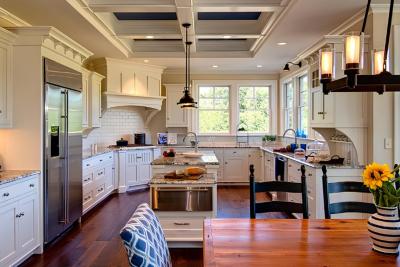
The News 14/12/2025
Architectural Digest gợi ý Cloud Dancer phù hợp với plush fabrics và những hình khối “mềm”, tránh cảm giác cứng/rigid; họ liên hệ nó với cảm giác “weightless fullness” (nhẹ nhưng đầy) [3]. Đây là cơ hội cho các dòng vải bọc, rèm, thảm, bedding: màu trắng ngà làm nổi sợi dệt và tạo cảm giác chạm “ấm”.Pantone has announced the PANTONE 11-4201 Cloud Dancer as the Color of the Year 2026: a "buoyant" and balanced white, described as a whisper of peace in the midst of a noisy world. This is also the first time Pantone has chosen a white color since the "Color of the Year" program began in 1999. Pantone calls Cloud Dancer a "lofty/billowy" white tone that has a relaxing feel, giving the mind more space to create and innovate [1].
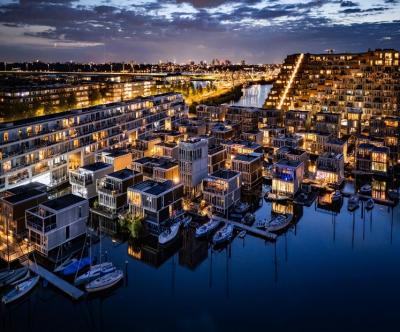
The News 04/12/2025
The Netherlands is one of the most vulnerable countries to climate change, with about a third of its area lying below sea level and the rest regularly at risk of flooding. As sea levels are forecast to continue to rise and extreme rains increase, the government is not only strengthening dikes and tidal culverts, but also testing new adaptation models. Floating housing in Amsterdam – typically the Waterbuurt and Schoonschip districts – is seen as "urban laboratories" for a new way of living: not only fighting floods, but actively living with water. In parallel with climate pressures, Amsterdam faces a shortage of housing and scarce land funds. The expansion of the city to the water helps solve two problems at the same time: increasing the supply of housing without encroaching on more land, and at the same time testing an urban model that is able to adapt to flooding and sea level rise.
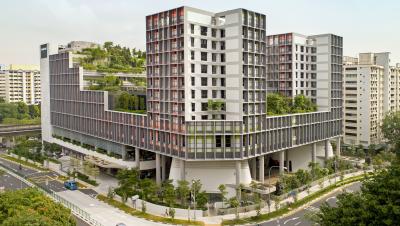
The News 20/11/2025
Kampung Admiralty - the project that won the "Building of the Year 2018" award at the World Architecture Festival - is a clear demonstration of smart tropical green architecture. With a three-storey "club sandwich" design, a natural ventilation system that saves 13% of cooling energy, and a 125% greening rate, this project opens up many valuable lessons for Vietnamese urban projects in the context of climate change.
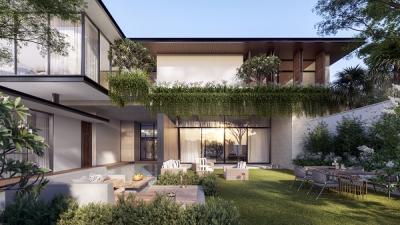
The News 10/11/2025
In the midst of the hustle and bustle of urban life, many Vietnamese families are looking for a different living space – where they can enjoy modernity without being far from nature. Tropical Modern villa architecture is the perfect answer to this need. Not only an aesthetic trend, this is also a smart design philosophy, harmoniously combining technology, local materials and Vietnam's typical tropical climate.
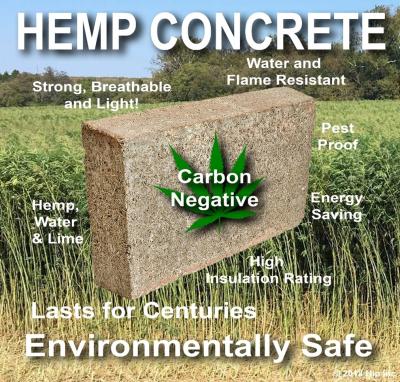
The News 25/10/2025
Hemp-lime (hempcrete) is a non-load-bearing covering material consisting of a hemp wood core (hemp shiv/hurd) combined with a lime-based adhesive, outstanding for its insulation – moisture conditioning – indoor environmental durability; in particular, IRC 2024 – Appendix BL has established a normative line applicable to low-rise housing, strengthening the technical-legal feasibility of this biomaterial.

The News 11/10/2025
Amid rapid urbanization and global climate change, architecture is not only construction but also the art of harmonizing people, the environment, and technology. The Bahrain World Trade Center (BWTC)—the iconic twin towers in Manama, Bahrain—is a vivid testament to this fusion. Completed in 2008, BWTC is not only the tallest building in Bahrain (240 meters) but also the first building in the world to integrate wind turbines into its primary structure, supplying renewable energy to itself [1]. This article explores the BWTC’s structural system and design principles, examining how it overcomes the challenges of a desert environment to become a convincing sustainable model for future cities. Through an academic lens, we will see that BWTC is not merely a building but a declaration of architectural creativity.